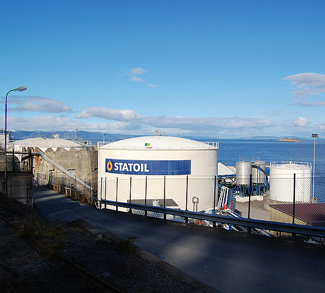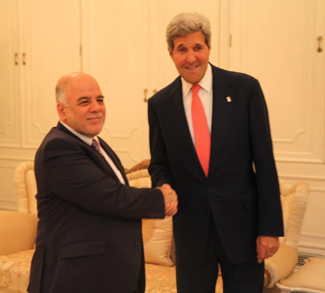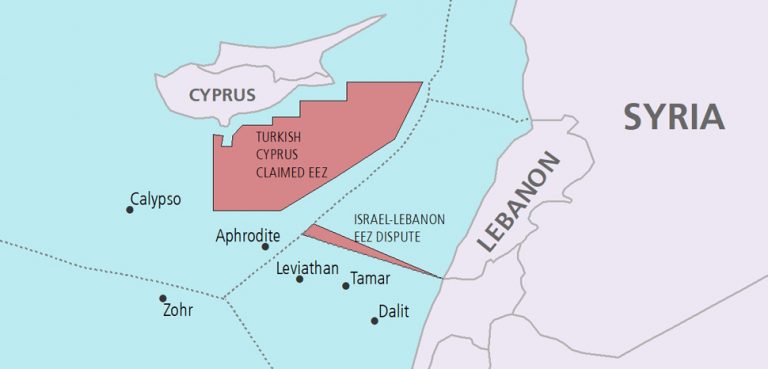Norway has always been known as a stable welfare state, with hydrocarbon wealth allowing for generous socio-economic benefits. Although recent debate has seen a call within Norwegian politics for a scaling back of government interventionism, the reality is that Norway remains an interventionist state, relying on hydrocarbon wealth rather than a structural focus on globalizing its business interests and becoming a competitive actor of international markets. The latter approach is one that recent critics have advocated. As Norway’s resource levels drop, turning to aggressive internationalization is viewed by some as essential in order to diversify Norway’s economy through attracting foreign businesses and increasing its own commercial involvement on the world stage.
Hence, contemporary debate of Norwegian economics has begun to center around the prospect of increasing privatization in order to compete on the world stage and also decreasing national dependence on a fast-dwindling resource.
The Theories of the Public and Private Sector
When analyzing the advantages of or motives of nationalization, critics often cite socio-economic factors as strong elements of government control of industries. From a pragmatic point of view, state control of an entire industry may be necessary due to said industry requiring significant amounts of start-up capital. In addition, state investment and ownership allow the state to command said industry for long-term socioeconomic policies, including economic and employment stability and state access and development of advanced technologies.
The latter element was prioritized by the Norwegian government during the 1970’s and the initial stages of oil exploration and discovery. As part of their indicative economic planning, the Norwegian government established a set of criteria for long-term state development and specialization in hydrocarbon management. Popularly known as The 10 Oil Commandments, these criteria were advanced as early as 1971. Of these Commandments, seven were dedicated to the creation and control of a Norwegian oil industry. The seventh commandment emphasized state involvement and control. This Commandment decreed that “[the] state must become involved at all appropriate levels and contribute to a coordination of Norwegian interests in Norway’s petroleum industry as well as the creation of an integrated oil community, which sets its sights both nationally and internationally.” Its instructions were bolstered by the establishment of a state oil firm (Statoil) to protect state commercial interests and ensure international cooperation to further Norway’s oil status (Commandment 8).
The creation of Statoil not only granted the Norwegian government a substantial public sector role, but allowed for the direct state supervision of hydrocarbon projects on the Norwegian Continental Shelf that were undertaken in tandem with international oil firms. As the creation of Statoil was implemented almost at the same time as the Commandments themselves, international cooperation began at early stages of Norway’s oil sector. Hence, Norway gained technological understanding of resource extraction from companies that were considered leaders of the field. This strategy contributed to the Second Commandment, which decreed that Norway must work toward independence for its supply of crude oil. Furthermore, it allowed Norway to gradually become a leader itself in resource extraction technology.
However, pure nationalization of Statoil was never implemented by the Norwegian government. In order for Norway to access leading resource extraction technology, Statoil needed to not only invite international firms but encourage competition between them for contracts. Hence, pure nationalization was avoided in order to ensure the participation of foreign firms with state supervision.
Norway’s Welfare and Paternalism
The major benefit to Norway’s oil wealth has been the state’s ability to maintain a high minimum standard of social welfare. Of particular note for some critics has been Norway’s ability to retain near-full employment via its oil wealth, starting in the 1970’s. Norway’s desire for full employment can certainly be regarded as a socio-political motive for a nationalized industry. Norway’s retention of near-full employment, some argue, allowed structural changes of industry (especially technological sectors) to be undertaken without any significant disruption to manpower levels. At the same time, Norway also protected sunset industries and the weak agrarian industry as a form of resisting externalities and ensuring, through subsidies, that the essential needs for an agricultural base were fulfilled, though not expanded.
Furthermore, oil revenues were used not only to retain employment in manufacturing and sunset industries, but to finance a significant increase in government employment. This increase likely coincided with Norway’s foray into the oil markets and the creation of a well-structured Norwegian oil firm (Statoil). In an interesting side-note, Norway’s socio-economic use of oil revenues in the mid-1970’s and 80’s was often contrasted with Thatcher’s Britain. While Norway devoted much of its oil income to employment retention, industrial government expansion, Britain distributed much of its own oil revenues in the form of unemployment benefits, which increased at a time when both private firms and the government sector were reducing their workforces.
However, although an interventionist welfare approach was aided by Norway’s small population, this was not enough. In order to balance near full employment with continuing industrial expansion, the state was forced to negotiate working conditions with private companies located within Norway. This form of what was branded ‘democratic corporatism’ saw the private accept expansion of employment and the adoption of state policies geared toward industrial expansion. The condition for such terms was the state’s implementation of wage cap policies. Such policies would allow firms to limit wage increases in exchange for full employment. This compromise, combined with oil and gas revenues, allowed Norway to pursue various socioeconomic goals: repaying external debt, ensuring minimum agricultural production through higher wages, expanding employment (including in the public sector) and maintaining employment in the manufacturing sector.
Further Privatization
In 2001, the Norwegian Parliament (Stortinget) decided to further privatize Statoil. For the first time, Statoil was listed on the public stock exchange, allowing the firm to expand its image as a private company rather than a state operation. This move saw a scaling back of government control, although regulation was still partially maintained. Statoil’s decision was largely based on the need to push forward with increased resource exploration outside of both the North Sea and Norwegian Continental Shelf. More specifically, there was a growing interest to explore the Barents Sea due to Norway’s own dropping reserve estimates.
As limited nationalization had been used to entice international firms into the Norwegian oil sector, it was now argued that further privatization would see closer cooperation with more private actors in an increasingly competitive market. As Norway was now looking to explore oil more globally (through private Norwegian firms, including Statoil), it was important to secure cooperation with international actors. The Barents Sea thus became a critical focus of international cooperation due both to its estimated hydrocarbon reserves and lack of claimants to the Barents region.
However, the Barents Sea is shared between both Norway and Russia. As Russia and Norwegian territory has been clearly outlined, cooperation should be more viable. It is likely that further privatization of Statoil will increase its profit motive. The increase of such motive will not only increase productivity, ever important as North Sea and other fields mature, but provide incentive for further innovation of resource extraction technology. At the same time, however, Norway will be forced to balance increasing privatization with retaining national interests. Here, it is possible to focus on Norway’s leading edge resource extraction technology. Given the importance to Norway of the oil sector, such technology can be linked to national strategic industries, with energy as a necessary, publicly consumed utility. Within this context, the Norwegian state may therefore carefully monitor the dealings of its private extraction technology firms with Russia. As Russia needs Norwegian technology specifically, due to the nature of subsea extraction in the Barents Region, the Norwegian government must balance the profit motives of such firms with retaining its technological advantage over Russia to product what can be regarded as a public utilities industry.
Balancing the Domestic Debate with EU Regulation
Of recent contribution to Norway’s economic debate has been Norway’s integration into EU markets. Such integration is especially pertinent as it has affected Norway’s petroleum sector. Norway was put under pressure to conform to such standards, not only due to the EU’s promise of granting Norway deeper access to EU markets, but because Western Europe represents much of Norway’s oil and gas market.
The EU’s emphasis on a liberalized market conflicted with Norway’s national monopolies of oil and gas, the Supply Committee (Forsnyngsutvalget) and the Gas Negotiation Committee (Gassforhandlingsutvalget) respectively. The Gas Negotiation Committee was responsible for all sale of Norwegian gas, regardless of whether or not foreign firms owned or operated the gas fields in Norwegian territory, while the Supply Committee acted as a socioeconomic buffer between Norwegian resource fields and private international firms competing for contracts. They key consideration of the Supply Committee when awarding contracts was which firm could guarantee the most efficient resource management. As the Supply Committee measured total resource management across all Norwegian fields, it would grant contracts within the context of complete national interest rather than and state-encouraged domestic entrepreneurship, which could leave foreign firms that were technically competent at a disadvantage.
EU desire for liberal markets had its greatest impact on Norway’s Gas Committee. EU regulation specifically addressed the sale and distribution structure of European gas transport from resource fields to end user. Such transportation was often dominated by monopolies and monopsonies. In the eyes of the EU, Norway’s Gas Committee fell into the latter category. Norway defended the Gas Committee’s contract assessments and transportation solutions by prioritizing resource management over the principles of free competition. Free competition would yield short to medium term benefits but at the expense of economic efficiency, affecting consumer prices, while dividing ownership or use of Norwegian pipelines between Norway and Third Party Access (TPA) would undermine stability of Norwegian supply routes to European clients.
Although Norway retained much autonomy in its use of the Gas Committee, the Gas Committee was forced to allow Third Party Access on the Norwegian Continental Shelf and also needed to balance its national interests with EU competition law. The latter was accomplished with a fair degree of retention of the Gas Committee’s decision-making power.
Conclusion
A small population and oil wealth has always given Norway the luxury of being a welfare nation. At the same time, it is clear that Norway’s interventionist approach could not be entirely achieved without private sector negotiations and the compromise of ‘democratic corporatism’. The aforementioned approach allowed Norway to expand employment in various sectors as a socio-political benefit in exchange for agreed wage caps and the erosion of union power. However, recent debate on public versus private sector application has challenged such Norway’s welfare system. Initially rhetorical, this debate has started to take greater hold as Norway has experienced erosion of its domestic institutional autonomy due to EU hydrocarbon regulations.
While the private versus public sector debate has often centered on welfare interventionism and the hydrocarbon sector, this angle of the debate is changing. As Norway’s fields continue to mature, some critics argue that Norway must diversify its economic outlook and embrace globalized markets, in a time when EU markets are beginning to shrink due to the challenge of fast-emerging economies and increasingly globalized industries.
The combination of depleting natural resources and globalization is a danger that Norway must be aware of. Norway’s economic performance, though relatively strong, is based almost exclusively on its resource wealth. Subsequently, Norway has invited few foreign industries (bar those of the hydrocarbon sector) into its domestic markets. Though efficient resource management and resource extraction technology can continue as economic policies, the finite nature of natural resources and welfare handouts have dulled Norway’s competitiveness and innovation. Hence, in order to survive in a world of globalized competition, Norway must capitalize on its position between advanced, European economies and resource-rich economies, increasing its global influence by becoming a Scandinavian hub for foreign business within the energy sector as a whole. Such an approach can allow Norway access to more diverse energy technology that it has yet to adopt (including technology in the renewable sector), and, in the longer run, give Norway the chance to attract further foreign markets in other sectors, using newly-established EU contacts. The presence of more foreign businesses in diverse fields will increase Norway’s own competitiveness and diversification.
Nicolai Due-Gundersen is a contributor to Geopoliticalmonitor.com and is associated with the Arab Institute for Security Studies (ACSIS).




